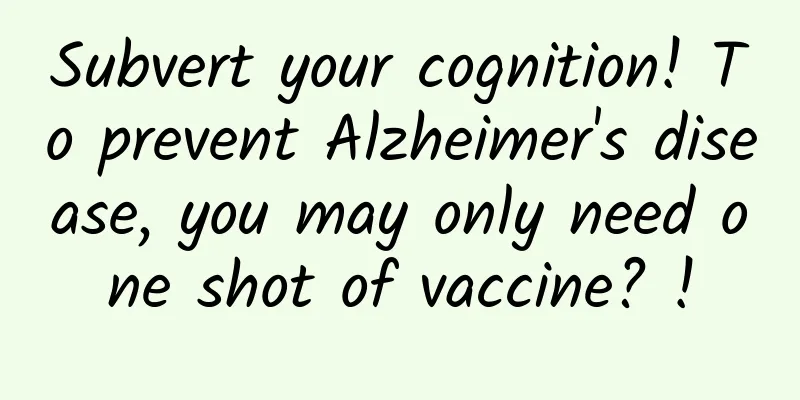The three-year-old boy often fell for no reason and was found to be suffering from "senile disease"

|
When it comes to cataracts People's first reaction is This is a disease that only old people get. In fact, except for the elderly Infants and children can also develop cataracts 1. What is congenital cataract? Congenital cataract Points out that it exists before and after birth Or it is a congenital heredity that is gradually formed after birth. or developmental cataracts This is a common eye disease in children. The second leading cause of blindness in children The incidence rate is about 0.05% Every year around the world 200,000 children blinded by cataracts at present Surgery is the only effective treatment for congenital cataracts 2. What kind of babies are prone to cataracts? The mother has a history of illness and medication during pregnancy, a history of radiation exposure or trauma, a family history of congenital cataracts, and the baby has systemic or eye diseases after birth, which makes it easy to get cataracts. In addition, if there is a hereditary cataract in the family, the baby is also more likely to get cataracts. Congenital cataracts have a huge impact on children's vision development. Since children are in the critical period of eye development, cataracts block the entry of external light, resulting in the eyes being unable to receive light stimulation and development stagnation. Therefore, children with congenital cataracts need to undergo surgery in time to remove the cloudy lens. 3. What are the symptoms of congenital cataracts? 1. Vision is seriously inconsistent with age 2. The eyes cannot move with objects and have no reaction to colored objects; 3. Uncoordinated eye movements, tilting the head and squinting when looking at things; 4. Symptoms such as small white spots can be seen in the center of the black eyeball; In addition, patients with a family history of cataracts must go to a regular hospital for a systematic examination within 3 months after the child is born. Young infants Can't express Coupled with early symptoms Similar to myopia and amblyopia Not easy to distinguish Therefore, the rate of missed diagnosis of cataract in children is relatively high. So, here comes the question 4. How to detect congenital cataracts early? Method 1: Children over 2 months old already have the ability to fixate. Parents can move an object in front of the child and observe whether the child's eyes can follow the object and move accordingly. If so, it means that the child has the ability to fixate. Method 2: When the child is watching TV, cover one of his eyes and let him watch with the other eye. If the child tilts his head or shows unhappiness, it means there is something wrong with that eye. Method 3: Place some toys in front of the child, and children with good eyesight will grab them by themselves. Method 4: Carefully observe the child’s activities, such as whether he runs very fast and whether he can quickly jump over obstacles in front of him. 5. When is the best time to get treatment? If the surgery is performed too late, it will cause amblyopia; if the surgery is performed too early, there will be postoperative inflammatory reactions, and even secondary glaucoma, iris adhesion and other problems, and some may also be complicated by retinal detachment. Generally speaking, experienced ophthalmologists will determine the best time for surgery based on the patient's vision, ability to respond to the external environment, and the morphology of congenital cataracts. For children under three years old, if it is a unilateral congenital cataract, with a lens opacity located in the visual axis area and with a diameter greater than 3 mm, it is recommended to undergo surgery as soon as possible, about 4-6 weeks, and no later than 8 weeks. If it is a bilateral congenital cataract, it can be slightly delayed, about within 10 weeks. For children over 3 years old, whether to undergo surgery is determined based on visual function and vision, and whether the patient can meet the daily life and learning needs. Warm reminder: For the treatment of congenital cataracts, the doctor's skills and experience are very important, and the timing of treatment is even more important, so parents must observe frequently in order to detect symptoms early and solve problems. |
Recommend
Can I have abortion at 45 days of pregnancy?
I believe many people know that there are two mai...
Causes of labia minora deformity
Labia minora deformity refers to the presence of ...
What does it feel like to have a mild water rupture?
When a woman is pregnant, the baby's body is ...
How many days after the menstrual period is the safe period
The safe menstrual period is divided into the saf...
Female left chest pain
I firmly believe that many people experience dull...
Overview of delayed periods
Delayed menstruation, also known as "infrequ...
Does baking soda work for bacterial vaginitis?
The vagina is a place where a complex community o...
Causes of brown menstrual discharge
Irregular menstruation and abnormal leucorrhea ar...
What is the reason for short menstrual period and small amount?
We know that gynecological diseases are common am...
Rubella causes deformed baby
Pregnant women cannot take medicine or receive in...
Some reactions of pregnant women and fetuses after a few weeks of pregnancy
Pregnant mothers who become mothers for the first...
How long does it take to get menstruation after curettage?
If a girl gets pregnant accidentally, she can cho...
Introduction to the reasons for delayed menstruation after taking contraceptive pills
Let me introduce to you the reasons why menstruat...
Can you eat pig intestines during menstruation?
It is okay for female friends to eat pig intestin...
How to treat thin endometrium? Comprehensive treatment methods
Thin endometrium is a common uterine disease in w...








![[Medical Q&A] After a knee injury, the X-ray shows no fracture. Why does the doctor still recommend an MRI?](/upload/images/67f0fc427393d.webp)
